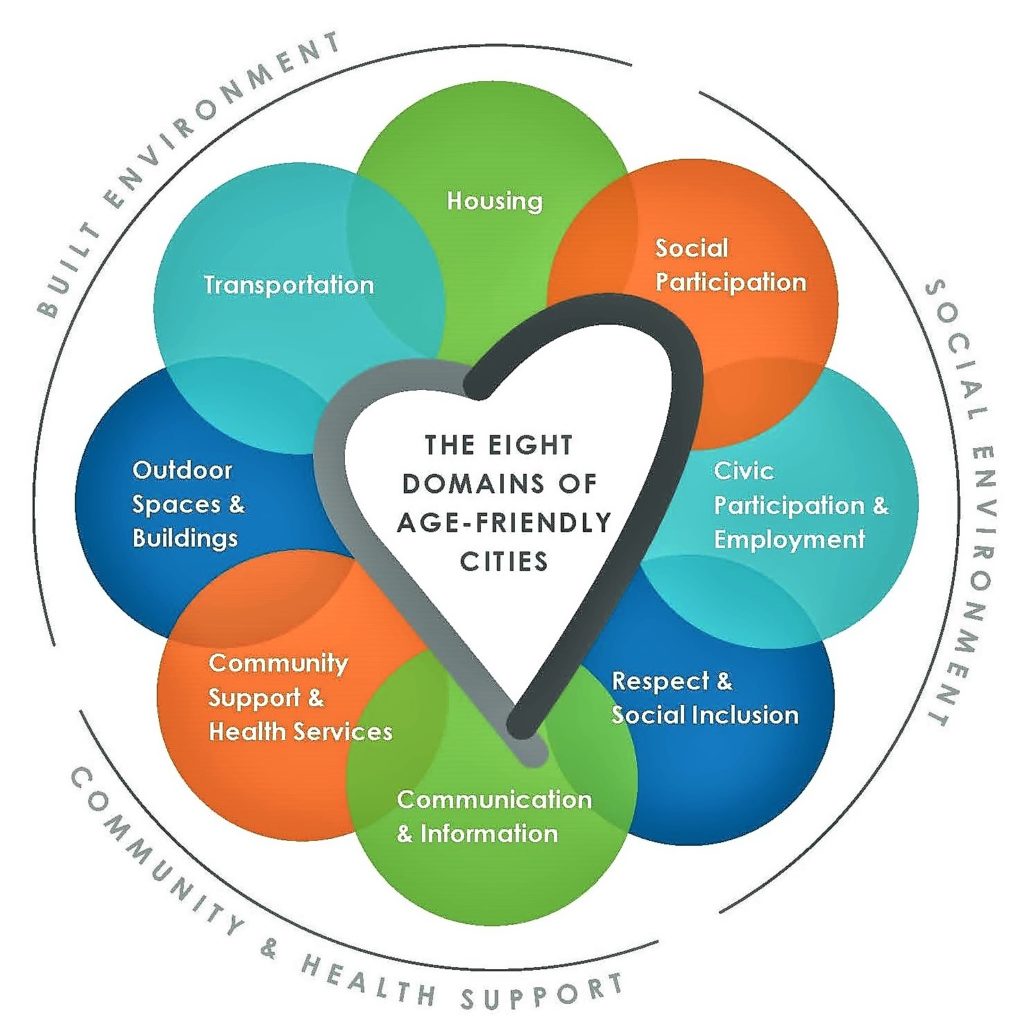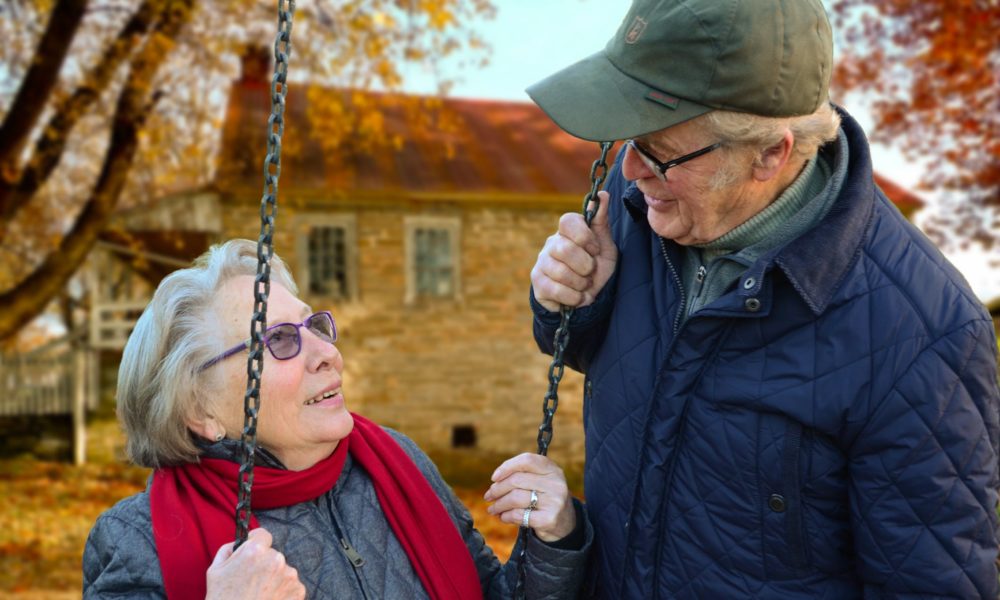The premise of an age-friendly world is one that enables people to actively participate in community activities with respect, regardless of their age. It is a place that makes it easy for older adults to stay connected to people that are important to them.
Spending time in a local park, visiting with friends, access to affordable housing, and staying engaged in the community can be more challenging as each year goes by. Over time some circumstances may change, such as losing the ability to drive or living alone, which may make it difficult for seniors to age in place.
In an age-friendly community, policies, services, and structures are designed to support and enable older people to “age actively.” That is, to live in security, enjoy good health, and continue to participate fully in society.
Age-friendly communities have walkable streets, housing and transportation options, access to critical services, and opportunities for residents at all life stages to join community activities.
An Age-Friendly World is in the Making
In practical terms, an age-friendly community adapts its structures and services to be accessible and inclusive of older people with varying needs and capacities.
But first, we need to identify which aspects of age-friendly communities are critical to ensuring that aging adults can experience a higher quality of life. The EPA framework classifies the needs of age-friendly communities in four categories:
- Active, connected and engaged with access to social interaction, social support, and civic engagement opportunities
- Neighborhoods and housing that include appropriate housing conditions, neighborhood access to services and shopping, and neighborhood safety
- Transportation and mobility that offers the freedom to move around using one’s own preferred mode of transport, accessible and convenient public transit
- Access to healthy activities such as food and recreational activities
A recent study, published in the journal Systematic Reviews, found that music and singing, intergenerational initiatives, art and culture, and multi-activity interventions that promoted the physical and mental well-being, health, and improved quality of life are age-friendly ways to support active, connected and engaged seniors.
Designing Age-Friendly Communities: Home Sweet Home at Any Age
One trend that is the core of the age-friendly community is the desire for the majority of senior citizens to age in place. Nine in 10 seniors intend to continue living in their current homes over the next five to 10 years.
Aging in place can help seniors maintain a higher degree of personal independence. It enables them to live their lives as they see fit, and they enjoy a sense of dignity unavailable to many elderly adults.

Not only does it allow them to continue to live in a familiar home, surrounded by treasured possessions, but they can remain close to neighbors and shopkeepers, they may have known for decades. On the financial end, the cost of care at home can be lower than the cost of care in a senior living community or skilled nursing facility.
An essential component of aging in place is having a community that helps older adults to do so. The World Health Organization (WHO) has created a model of “age-friendly environments” that provides ways in which communities can support older adults living among them. WHO believes that creating age-friendly environments is a group effort:
“Creating truly age-friendly environments requires action in many sectors: health, long-term care, transport, housing, labor, social protection, information and communication, and by many actors – government, service providers, civil society, older people and their organizations, families, and friends. It also requires action at multiple levels of government.”
The Council on Aging in Central Oregon has programs in place to help older adults who wish to age in place at home.
In-home care:
Our information specialists can help you learn more about services ranging from skilled nursing care and occupational, physical, respiratory, and speech therapy, help with medications, to assist with activities of daily living and housekeeping. Here is a list of In-Home Care Agencies in Central Oregon.
Nutrition services:
Home-delivered meals (Meals on Wheels) are delivered to home-bound older adults at risk for poor nutrition and/or hunger. Once Covid-19 shelter in place orders are lifted, community dining in a senior center or other sites offers a healthy meal, an opportunity to socialize with others, and access to other supportive services.
Transportation:
Services for older adults or people with disabilities who lack private transportation or who are unable to access public transportation. Learn more about existing public transportation options.
“Making tangible improvements in the lives of older people, their families, and their communities is central to WHO’s proposed Decade on Healthy Ageing (2021 – 2030). Age-friendly cities and communities across the world will be key to achieving a healthier, safer, fairer world for everyone, everywhere”. Dr. Tedros Adhanom Ghebreyesus Director-General World Health Organization
WHO’s Global Network of Age-Friendly Cities and Communities has identified eight domains of livability that affect the quality of life for older adults. They include:
- Domain 1: Outdoor Spaces and Buildings
- Domain 2: Transportation
- Domain 3: Housing
- Domain 4: Social Participation
- Domain 5: Respect and Social Inclusion
- Domain 6: Civic Participation and Employment
- Domain 7: Communication and Information
- Domain 8: Community and Health Services
In the next issue of the Council on Aging of Central Oregon Community Connection newsletter, we’ll take a closer look at Outdoor Spaces and Buildings, including what Central Oregon has planned for you!


